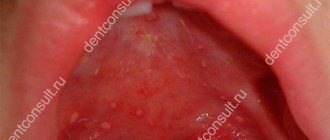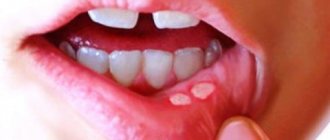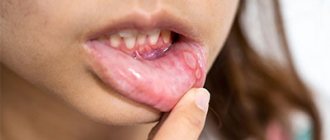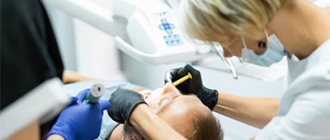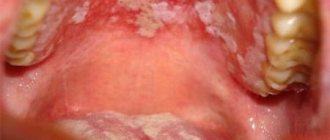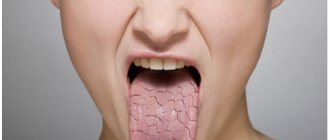Trophic ulcers are a complication of varicose veins, which is why they are sometimes called varicose veins. Occurs in eight out of ten patients with chronic venous insufficiency of the extremities. In terms of the general population, every thousand people suffer from ulcers due to varicose veins on the legs. In Moscow, with a population of 12.5 million people, at least 12,000 residents have varicose ulcers (the same number of residents in Suzdal).
Once a trophic ulcer occurs, it constantly progresses and without proper treatment leads to a persistent decrease in living comfort. In advanced cases, it can lead to disability and loss of limb.
Causes of formation of varicose ulcers
The main reason for the formation of ulcers on the legs with varicose veins is a violation of the trophism (nutrition) of tissues. The veins cannot cope with their work and expand under the influence of excess blood pressure. Blood stagnates, tissues do not receive oxygen and nutrients. Gradually, the process spreads, nerve fibers atrophy, and sensitivity is impaired.
Trophic ulcers in varicose veins are divided into primary (true) and secondary. True ones form on the wall of the dilated vein. The triggering factor is the rupture of a varicose vein and a violation of the integrity of the skin.
Secondary ones arise above the affected vein, where tissue trophism is significantly impaired. Any damage to the legs can trigger a dangerous process - an abrasion, scratch, chafing, bruise or scratch.
The situation can be aggravated by a sedentary lifestyle, prolonged sitting, working on your feet, frequent hypothermia of the feet, heavy lifting and even smoking. Complications can also arise from wearing tight or narrow shoes.
Fractional RF lifting –
At the beginning of the article, we already said that such devices are effective against red spots after acne. But at the same time they are very effective against atrophic scars after acne or chickenpox. We recommend 2 devices for this. Firstly, the Venus Viva device (made in Canada/Israel), which must be equipped with a NanoFractional RF tip. Secondly, eTwo™ and Elos Plus™ devices from , which must be equipped with a Sublative RF fractional tip.
The fractional tips of these devices are supplied with disposable applicators with microneedles (electrodes up to 1 mm in size), with the help of which thermal damage is produced in the epidermis and dermis. The damage is fractional in nature, i.e. they are surrounded by intact tissue for rapid re-epithelialization of damage. Damage to the epidermis is microscopic and not noticeable; the main effect is realized in the dermis.
Thus, this is an ablative technique (with damage to the stratum corneum of the epidermis), but unlike laser resurfacing procedures, fractional radiofrequency lifting has a very short rehabilitation period and no side effects. The method is effective not only for atrophic scars, but also for the treatment of post-inflammatory erythema and hyperpigmentation. Below you can see photos before and after a course of 3 fractional RF lifting procedures.
Stages of development of ulcers with varicose veins
Varicose ulcers of the extremities develop gradually. First, the skin over the varicose vein changes color to intense pink, and then purplish-red. Later, the skin becomes shiny, smooth, thin and dry, and begins to itch and flake. Microcracks appear, which soon transform into erosion. Without treatment, they progress, growing in depth and breadth, gradually capturing subcutaneous fat, muscles, tendons and even the periosteum. Ulcers with varicose veins on the legs look scary and are prone to suppuration. The developing infectious process aggravates the patient's condition.
Get an online consultation
right now.
Get
Pre-ulcerative stage of varicose veins . With intact skin, a place with reduced sensitivity is detected. The area of skin over varicose veins reacts little to pain, cold or heat, pressure and injections. At the same time, tingling and twitching sensations (convulsions) periodically appear in the area of the legs and feet. A little later, part of the skin of the leg, where the varicose veins are, becomes smooth and shiny. This is caused by further trophic disorders, swelling of the subcutaneous adipose tissue. As the veins continue to dilate, the pressure increases, the skin, experiencing strong tension, stretches and becomes thinner. The affected area first turns pale, then becomes bluish, and then turns red. The patient experiences burning and itching. On a red background, you can see dark dots (exudate sweating) and necrotic pale spots.
Stage of formation of trophic ulcers . In place of whitened spots and microtraumas, ulcers are formed - round-shaped erosions with a tendency to spread. They “grow” both in depth and in breadth. They can unite and merge into a common wound surface. There is a high risk of bacterial infection.
Purification stage . Ulcers on the legs deepen and take on a characteristic shape with jagged edges. The skin around them rises due to swelling, becomes bright purple, and peels off. A bloody exudate with an unpleasant odor is released from the wound surface. If an infection occurs, the discharge becomes purulent and can be very copious. Sometimes additional defects appear nearby - the trophic ulcer spreads, affecting neighboring areas.
Necrotic stage . The process is progressing. The ulcers merge into one necrotic, smelly wound. The infection spreads and general intoxication occurs. Body temperature rises to 39ºС, headache, chills occur, lethargy and weakness increase. Necrosis involves muscles and bones. The person experiences severe pain. There is a high probability of developing wet gangrene, which almost always ends in amputation of the limb. Otherwise, the patient faces death.
Complications arise from untimely medical care, in advanced cases. These include:
- gangrene - tissue necrosis that spreads quickly,
- sepsis - "blood poisoning"
- thromboembolism - the formation of a blood clot in the affected vein and its separation with drift into the vessels of the heart, lungs or brain.
All these complications of varicose veins are deadly. They can be avoided by consulting a doctor in time, identifying the disease and undergoing a full course of treatment.
Diagnosis of ulcers in varicose veins
Phlebologists deal with the problems of varicose veins. Where there are no phlebologists, surgeons help with varicose veins of the extremities. Trophic ulcers on the legs with varicose veins look so characteristic that the doctor makes the diagnosis during an examination of the patient. Additional research methods are used to clarify the stage of the disease and assess how deep the varicose ulcer is. For this purpose, angiography, venography and, in some cases, magnetic resonance imaging (MRI) are used. Clinical and biochemical blood tests allow us to assess the general condition of the body in order to plan appropriate therapy.
To fully treat trophic ulcers, the doctor collects a complete “dossier” of the disease: he specifies the time of the first signs of leg disease, what treatment methods were used and how they helped. The doctor is interested not only in the immediate location of the pathology, but also in the general condition of the body. After a thorough examination, an examination is prescribed. How wide it will be depends on many factors. After the doctor collects the necessary data, a final diagnosis will be made and a treatment plan drawn up. The doctor will discuss the target dates, when approximately the ulcers on the leg should clear and heal.
Ways to get rid of post-acne
The intensity of post-acne is directly related to the severity of acne. Therefore, it is important to work not only to eliminate the consequences, but also to prevent the appearance of new elements on the skin. It is necessary to fight acne itself, eliminating its main causes. If pimples appear again and again, the prognosis for post-acne treatment is questionable; inflammation will give rise to new scars. Therefore, work with an experienced dermatologist-cosmetologist is required.
Most of the work on restoring, smoothing the skin and eliminating scars is carried out by a cosmetologist, but certain activities can also be performed at home. Moreover, only an integrated approach will give the most maximum results.
What can you do at home?
At home, you need to help the skin recover; it needs building elements and proper nutrition. To regenerate the skin and form its structure, it is necessary to supply vitamins and minerals, protein as a source of amino acids for the construction of collagen fibers and the synthesis of hyaluronic acid, which moisturizes and gives the skin tone and smoothness.
In addition, omega acids are important, which are involved in cell renewal and form cell membranes. It is important to adjust your diet, eliminate as much processed foods as possible, food chemicals (dyes, preservatives, E-additives) and give up bad habits.
To prevent new acne and improve tone, nourish the skin, heal inflammation and small scars, pharmaceutical products will help. You can use 1% salicylic alcohol or boric acid and wipe the skin with it twice a day. Levomekol ointment works quite well in treating acne, suppressing inflammation and eliminating scars. Many people use bodyaga powder, which is diluted in water to a paste and applied to the affected area. But before using all these remedies, it is important to first consult with your doctor to prevent side effects and complications.
Skin care is complemented by serums, care creams (day and night) selected by a cosmetologist, as well as homemade peelings with fruit acids. They delicately exfoliate the skin, remove dead cells, and cleanse its surface.
Folk remedies are often used, for example, infusions of St. John's wort and chamomile, which have an anti-inflammatory, soothing, cleansing effect. You can freeze them and wipe the skin with the resulting ice cubes, further increasing blood circulation and capillary tone.
You can also use masks with blue clay. The recipe for making a mask is very simple: three tablespoons of powder are diluted in water to a paste, applied to the problem area for 20 minutes and then thoroughly washed off with water.
What treatment methods are used in a cosmetology clinic?
Although homemade recipes help in the fight against post-acne, you should not think that only through them you can eliminate all problems. Home methods act on the very top layers of the skin and reduce only minor defects.
Modern cosmetic procedures will help get rid of deep scars, pigmentation and unevenness. But don't expect instant results.
Treatment methods are selected individually and comprehensively. The more severe the initial problem and the wider the affected area, the longer the treatment will be.
To achieve maximum smoothness of the skin and an even complexion or eliminate blemishes on the body, you need a whole series of procedures, supplemented by home care and carefully selected cosmetics. On average, the first noticeable results will be visible after 1-2 months with regular implementation of all necessary treatment measures.
If there is unevenness, decreased skin tone, pigmented or stagnant spots, peelings . There are a lot of treatment options: these can be mechanical peels (compositions with herbs, small dense particles) and chemical peels (with retinol, glycolic, resorcinol or other compounds).
With mechanical peeling, the effect of cleansing and exfoliation is achieved due to the mechanical scraping of the particles included in the composition of the upper layer of skin with outdated epithelial cells.
With chemical peeling, a similar effect is achieved through chemical cauterization of the upper layer of the epidermis, which leads to its subsequent rejection with peeling.
The cosmetologist selects peelings to suit your needs and strictly follows all the rules for their implementation in order to achieve maximum effect and avoid side effects. On average, the first results are visible after 5-6 procedures.
A more effective analogue of peeling is laser skin resurfacing . The doctor performs the procedure with a special laser unit with a strictly specified wavelength in order to influence the skin at the required depth without damaging neighboring tissues. The laser beam cauterizes the skin, the treated areas are actively exfoliated, which allows stimulating the regeneration of new tissues, more even and smooth.
Check out our patient's review of laser facial resurfacing:
Photothermolysis is a more advanced method of laser skin treatment. The rays do not act as a continuous field, but as individual points - creating a mesh on the treated area. This is a fairly effective, but less traumatic effect; the rehabilitation period after such procedures is reduced.
dermabrasion is used to combat skin imperfections . This is the use of aluminum oxide powder under pressure or a special rotating abrasive disc for mechanical grinding of the skin, removing the upper layers of the epidermis from it.
Filler injections can help eliminate atrophic scars and dimples and smooth out the skin . They are inserted under the defect area, create additional volume, and lift depressed skin. The effect lasts up to 6-10 months (depending on the drug), then the injections are repeated.
Mesotherapy with drugs that stimulate collagen synthesis and epidermal renewal gives good results A series of microinjections are made into the surface layers of the skin with the introduction of hyaluronic acid, antioxidants, and vitamin components. The cosmetologist selects a specific drug depending on the tasks and the severity of skin defects.
Another method is ozone therapy . This is a technique of introducing a special oxygen mixture into a problem area through a series of microinjections. The composition helps saturate tissues with oxygen, stimulates blood circulation or lymph drainage, and epithelial regeneration.
If no other methods have produced a significant effect, surgical removal of scars can be used. The affected scar tissue is excised within the boundaries of healthy skin. The rehabilitation process is long, and the intervention itself can also leave scars in the future.
Post-acne treatment at Dr. Gruzdev’s clinic:
Chemical peeling The clinic offers gentle superficial peels: almond and glycolic.
More details
Laser resurfacing Impact of a laser beam on problem areas of the surface layer of the dermis.
More details
Biorevitalization A non-surgical technique for facial rejuvenation using preparations based on hyaluronic acid.
More details
Mesotherapy An injection technique for introducing “cocktails” into the skin based on vitamins, microelements, and amino acids.
More details
Conservative treatment
During treatment, trophic ulcers are treated with antiseptic and antibacterial agents: solutions, gels, ointments, dressings. In case of infection, antibiotics are prescribed in tablet or injection form.
After cleansing the ulcerative bottom, the trophic ulcer is treated with agents that enhance regeneration and restore trophism. To improve the tone of the veins, elastic bandaging is used. Maintenance therapy is prescribed: vitamins, venotonics, restoratives. Physiotherapy in this case is an auxiliary method that helps improve blood microcirculation and tissue nutrition. The most commonly used are laser therapy, magnetic therapy, and infrared radiation.
Surgery
For life-threatening complications of varicose veins, the presence of a large area of skin ulceration, or a deep wound, surgical treatment is used. The ulcer is cleaned mechanically using curettes (wound curettage), vacuuming or VAK therapy. In severe cases, the affected area is excised and the defect is covered with a skin graft from the patient's thigh. Sometimes additional blood vessels are inserted to not only remove the defect, but also restore blood supply. After the operation, the patient undergoes a course of rehabilitation, after which he returns to his normal life.
TCA chemical peel –
Ice pick scars can be corrected well with trichloroacetic acid (TCA) peels, but this method should be avoided in patients with dark skin due to the high risk of hyperpigmentation. Conducting a medium peel will mean a TCA concentration of 40-50% (only in this case does damage to the papillary dermis occur), and anything below 40% is only a superficial peeling to the depth of the epidermis. Accordingly, we need a TCA of at least 40%.
It should be noted that such a high concentration means certain risks. Therefore, such peeling should only be done by a very experienced dermato-cosmetologist. Below you can see the result after 3 TCA 50% peeling procedures, where the intervals between procedures were 4 weeks. As you can see, a significant improvement has been achieved, and other methods can then be used (for example, laser resurfacing, or the method of perforation removal of individual scars).
TCA chemical peel (before and after photos)
Prevention of varicose ulcers after treatment
If the goal of treatment is achieved: blood flow is restored, adequate tissue nutrition is restored and the cause of the disease is eliminated, the risk of complications is minimal. However, the patient should remember that his future fate depends on himself. You need to lead a healthy lifestyle and constantly monitor the condition of your blood vessels. For this:
- take medications prescribed by a doctor,
- eat right (exclude fast food, alcohol, animal fats and simple carbohydrates),
- avoid excessive physical activity,
- perform a complex of physical therapy,
- wear compression stockings on the lower extremities,
- choose comfortable shoes,
- come regularly for medical examinations (twice a year),
- undergo specialized sanatorium-resort treatment.
Compliance with the doctor-prescribed regimen, nutrition and physical activity will help avoid relapse of a trophic ulcer. By contacting the A. Begma Medical Center regarding varicose veins, you can get a detailed consultation with a phlebologist, clarify the condition of the veins, get rid of trophic ulcers and make sure they never bother you.
